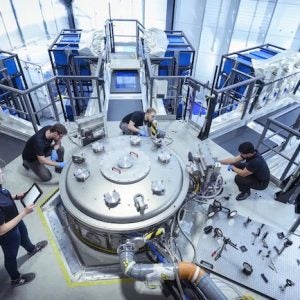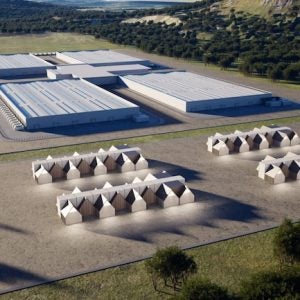
India’s Atomic Energy Regulatory Board (AERB) has given its approval for the “first approach to criticality” for the Prototype Fast Breeder Reactor (PFBR), following a final review. The regulatory approval came four months after Prime Minister Narendra Modi visited the PFBR to witness the loading of the first fuel assemblies into the reactor core.
The PFBR is a 500 MWe sodium-cooled fast breeder nuclear reactor at Kokkilamedu, near Kalpakkam. The Indira Gandhi Centre for Atomic Research (IGCAR) designed the reactor based on decades of experience gained from operating the lower power Fast Breeder Test Reactor (FBTR).
The PFBR was developed by BHAVINI (Bharatiya Nabhikiya Vidyut Nigam Limited), a government enterprise set up in 2003 under the Department of Atomic Energy (DAE) to focus on fast breeder reactors. Construction began in 2004 and the reactor was originally expected to be completed in September 2010, but is faced a series of delays. It is now scheduled to be put into service in December 2024. As a result of the delays, the project’s cost has doubled from INR 35bn ($422m) to INR77bn.
DAE said: “In line with the true spirit of Aatmanirbhar Bharat [Indian self-reliance], PFBR has been fully designed and constructed indigenously by BHAVINI with significant contribution from more than 200 Indian industries including MSMEs [micro, small and medium enterprises]. Once commissioned, India will only be the second country after Russia to have a commercial operating Fast Breeder Reactor.”
In the final stage of core loading, fuel sub-assemblies will be fitted into the core of the reactor following which the nuclear fission process will begin. On attaining a sustained nuclear chain reactor – known as criticality – the reactor will be declared operational and a few lower power physics experiments will be conducted. Subsequently, AERB’s approval will be sought to generate electricity on a commercial scale and connect the reactor to the grid. Once DAE is confident in the reactor’s operation, two more fast breeder reactors will be constructed at Kalpakkam.
Fast breeder reactors form the second stage of India’s three-stage nuclear programme. India has adopted a three-stage nuclear power programme, with the long-term goal of deploying a thorium-based closed nuclear fuel cycle. The first stage is based on pressurised heavy water reactors (PHWRs), fuelled by natural uranium, and light water reactors. The second stage involves reprocessing used fuel from the first stage to recover the plutonium to fuel FBRs. In the final stage, Advanced Heavy Water Reactors (AHWRs) will burn thorium-plutonium fuels and breed fissile uranium-233.






